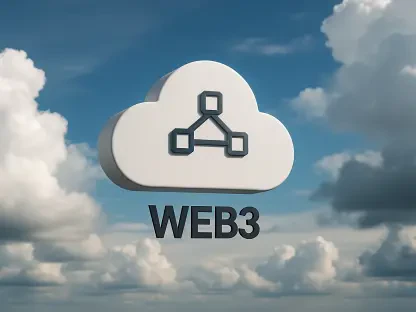SAP’s decision to end mainstream support for its on-premise ERP system, SAP ERP Central Component (ECC), by December 31, 2027, is a pivotal moment for enterprises globally, particularly in the Asia-Pacific (APAC) region. SAP is steering its customers toward its cloud-based alternative, S/4HANA Cloud, a transition which represents both an opportunity and a challenge for organizations. As the deadline approaches, businesses must navigate numerous obstacles, including financial considerations, technological complexities, and strategic planning. The countdown to 2027 is already influencing strategic IT decisions across the APAC region, making it essential for companies to carefully evaluate their roadmaps and prepare for the shift to cloud-based ERP.
SAP’s Strategic Shift: ECC to S/4HANA Cloud
The clock is ticking for ECC users as SAP phases out mainstream support for its on-premise system. Initially set for 2025, the deadline was extended to 2027 in response to customer concerns. However, a premium support extension until 2030 is available, offering some flexibility for those still weighing their options. The strategic move is part of SAP’s broader goal to modernize its ERP offerings, emphasizing cloud adoption through S/4HANA Cloud and the ‘Rise with SAP’ initiative.The S/4HANA Cloud platform promises advanced features, including AI-driven capabilities, which on-premise systems cannot leverage. This technological allure is pivotal for businesses aiming to stay competitive in an increasingly digital landscape. However, the transition is daunting, involving significant financial investment and infrastructural overhauls. Organizations must not only budget for the new system but also allocate resources for the migration process itself, including potential training and operational disruptions.Companies must weigh SAP’s promise of superior performance and future-readiness against the considerable challenges of moving to a new platform. The technological gains are clear, but so are the hurdles, such as data migration complexities and the need for continuous innovation to stay ahead. As a result, many enterprises are taking a cautious approach, striving to balance immediate operational needs with long-term strategic goals.
Reluctance and Challenges in Migrating
Despite the clear incentives, the migration to S/4HANA Cloud is progressing slowly, particularly in the APAC region. Enterprises face a complex decision-making process, balancing the need for modernization with the inherent risks and costs. Historical dissatisfaction with SAP’s on-premise license policies adds to the reluctance, creating a cautious approach among businesses. High migration costs and potential disruptions to business operations are major deterrents. PwC’s insights reveal that only a few Australian and New Zealand firms had migrated to S/4HANA by 2024. The extensive planning and resource allocation required for this transition means that many enterprises are opting to delay the migration, preferring to use the extended support period.The complexity of migrating a crucial system like an ERP cannot be overstated. It’s not just about switching software; it’s about overhauling processes, re-training staff, and ensuring that every facet of the business is seamlessly integrated into the new system. These steps require time, effort, and a clear strategic vision. SAP clients are hesitant, concerned about possible interruptions to their business activities, loss of productivity during transition periods, and the sheer cost of moving to a cloud-based system. This cautiousness is understandable, given the scale and stakes of such a migration.
Exploring Alternatives: Competitors and Third-Party Support
The hesitation to migrate has led many organizations to explore alternative pathways. Some are considering competing ERP solutions which offer similar cloud capabilities without the migration hassle. Others are leaning on third-party support options to extend the life of their current ECC systems. Gartner’s research highlights that by mid-2023, only about one-third of ECC users had secured licenses or subscriptions for S/4HANA, with even fewer going live with any S/4HANA components. This trend illustrates a broader inertia across various markets, including Europe and Japan, where some businesses adopt a “wait-and-see” approach. The apprehension is palpable, driven by economic uncertainties and the strategic implications of such a significant IT transformation.For those who choose to look beyond SAP for their ERP needs, the marketplace is rich with alternatives. Companies like Oracle, Microsoft, and Infor offer robust ERP solutions that some businesses find more aligned with their strategic needs and budget constraints. Switching to a competitor, however, introduces its own set of challenges, including re-engineering business processes to fit the new system and ensuring data compatibility. Meanwhile, third-party support vendors provide a stop-gap solution, offering to maintain ECC systems beyond SAP’s support deadline, giving businesses more time to plan their next steps without feeling rushed into a decision.
Increasing Migration Activities and Customer Sentiment
As the 2027 deadline looms closer, there’s a noted uptick in migration planning activities, albeit from a place of necessity rather than enthusiasm. Customer sentiment remains mixed, influenced by economic constraints, market dynamics, and technological uncertainties. Notable APAC brands, including Airservices Australia and the Australian Federal Government, have initiated migrations under the ‘Rise with SAP’ banner, setting a precedent for others. This cautious optimism is tempered by the reality that many businesses are still in the preliminary stages of planning, not yet committing to the full migration process. The general consensus among industry experts is to prepare meticulously without rushing, ensuring strategic alignment and minimizing operational disruptions.The sentiments prevailing among enterprises reflect a pragmatic approach to the impending transition. While there is an acknowledgment of the need to modernize and keep up with technological advancements, there’s also an understanding that this is a high-stakes decision that must be executed flawlessly. The success stories of early adopters in the APAC region serve as case studies for others, demonstrating the potential benefits while also highlighting the obstacles that need to be carefully managed. As more companies begin to plan their migration, they contribute to a growing repository of insights and best practices that can help inform future transition strategies, making the journey slightly less daunting for those who follow.
SAP’s AI and Innovation Strategy: A Catalyst for Change
SAP’s innovation strategy, particularly its focus on integrating AI and other advanced technologies exclusively into its cloud offerings, serves as both a carrot and a stick. On-premise customers face the prospect of missing out on these advancements, which could be a significant disadvantage in a rapidly evolving tech landscape. This aspect of SAP’s roadmap is designed to accelerate the migration pace, by making the cloud option not just a necessity due to support deadlines, but a compelling proposition for businesses seeking to leverage cutting-edge technologies for competitive advantage. However, the inherent challenges in transitioning have meant that this strategy is met with varied responses across different markets.The promise of artificial intelligence, machine learning, and other innovative technologies like predictive analytics embedded in S/4HANA Cloud is indeed tantalizing. Businesses recognize the need to stay ahead of the curve, harnessing these advancements to drive efficiency, customer satisfaction, and new business opportunities. But transitioning to a platform that enables these innovations requires a clear-eyed assessment of current capabilities and future needs. As companies grapple with these questions, they must also consider how quickly technology is advancing and the risk of falling behind competitors who may adopt these innovations more swiftly. Balancing the lure of new technologies with the practical realities of migration remains a key strategic challenge.
Economic and Market Influences on Migration Decisions
Economic conditions and market pressures are formidable factors influencing migration decisions. Many businesses find it challenging to justify the high costs associated with the migration amidst tough market climates. The balance between immediate operational needs and long-term strategic benefits is delicate, often leading to delays in committing to the transition. These economic and market realities underscore the complex landscape that enterprises must navigate. From budget constraints to competing priorities, the decision to migrate cannot be taken lightly, necessitating a thorough assessment of the costs, benefits, and potential risks involved.Market dynamics further complicate the decision-making process. Companies must not only consider their immediate financial health but also anticipate future market conditions and their impact on business strategy. For instance, adopting a cloud-based ERP could enable more agile responses to market shifts, but the initial cost and resource drain could be a burden if economic conditions worsen. Organizations must therefore craft a migration strategy that aligns carefully with their broader business objectives, ensuring that the timing and execution of the transition are optimal. This involves not only financial planning but also an evaluation of competitive pressures and technological trends that could influence the suitability and timing of the migration to S/4HANA Cloud.
Strategic Planning for a Future-Ready Transition
SAP’s announcement to conclude mainstream support for its on-premise ERP system, SAP ERP Central Component (ECC), by December 31, 2027, marks a significant turning point for enterprises worldwide, particularly in the Asia-Pacific (APAC) region. This strategic move is pushing customers towards SAP’s cloud-based alternative, S/4HANA Cloud. This transition is both a promising opportunity and a daunting challenge for organizations, requiring them to tackle a slew of issues, such as financial implications, technological hurdles, and comprehensive strategic planning.As the 2027 deadline looms closer, it’s already impacting strategic IT decisions across the APAC region. The urgency to move to a cloud-based ERP system necessitates that companies thoroughly assess their current software strategies and meticulously plan their migration pathway. This process involves evaluating the cost implications, technological readiness, and the overall alignment with long-term business goals.Moreover, the shift is not just about technology but also about rethinking how business processes and workflows can be optimized in a cloud environment. Organizations must also address the skills gap, ensuring their teams are adequately trained for the new system. Change management becomes vital during this transition, as staff need to adapt to new workflows and technologies seamlessly.In conclusion, the end of mainstream support for ECC by 2027 is driving significant shifts in IT strategy, especially in the APAC region. Companies must take a proactive approach to this transition, ensuring they are well-prepared to harness the benefits of S/4HANA Cloud while mitigating potential challenges.









